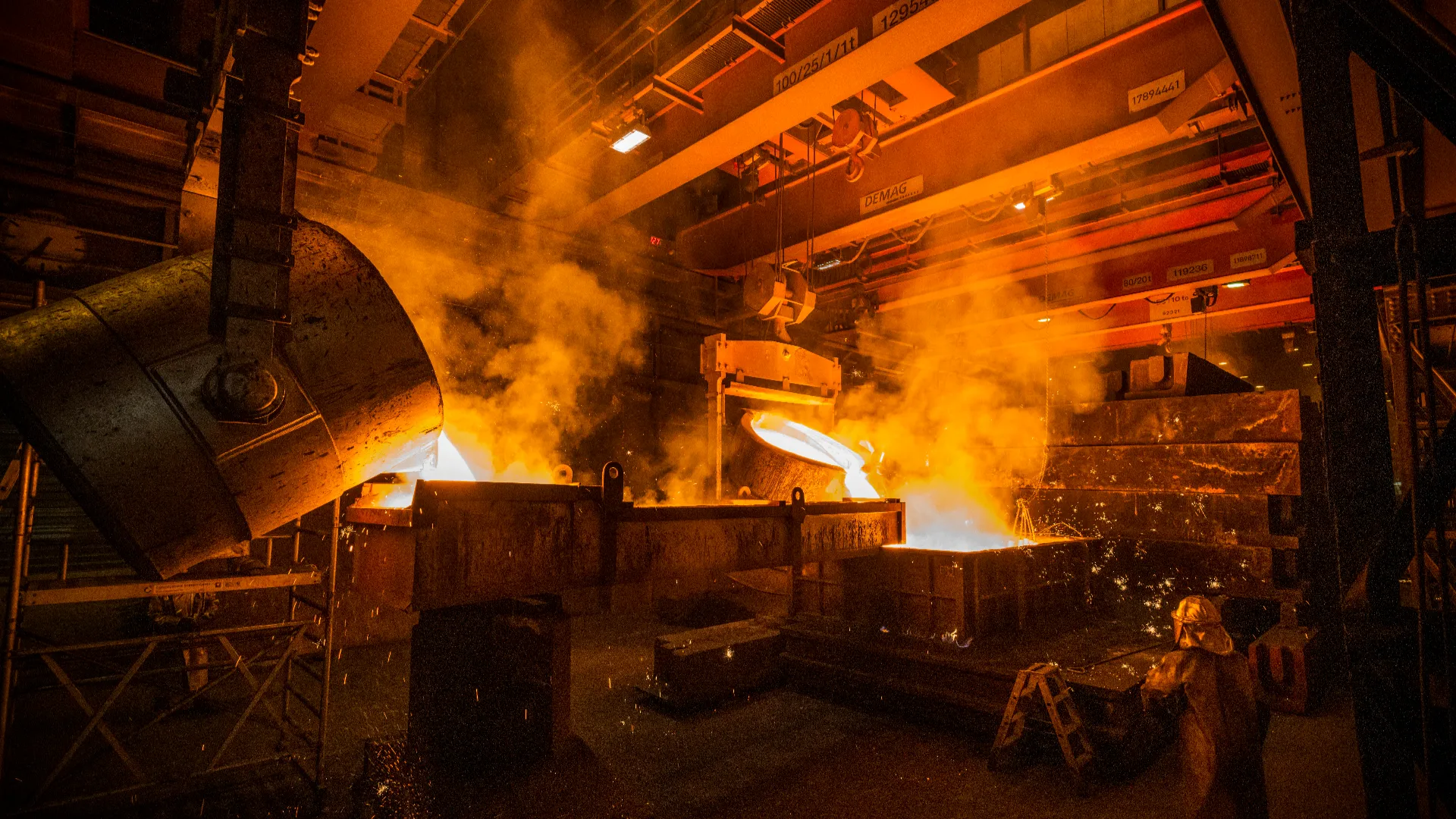From the look of things, it should be hot as hell in here. But the giant pots, holding up to 30 tons apiece of molten iron, are coated with insulating rock, so the heat never reaches the hall of the molding shop. Move within a couple of meters though and just the air around the pots – a scorching 1580° Celsius – is too hot to bear.
Wearing faceguards, helmets, fireproof coats, and protective pants and shoes, the foundry mechanics are about to cast a crankcase for the 12V48/60 – an engine over nine meters long with a dozen cylinders nearly half a meter in diameter each. “The engine typically powers workboats, ferries and cruisers,” says Sven Eymann, “even large power plants.”
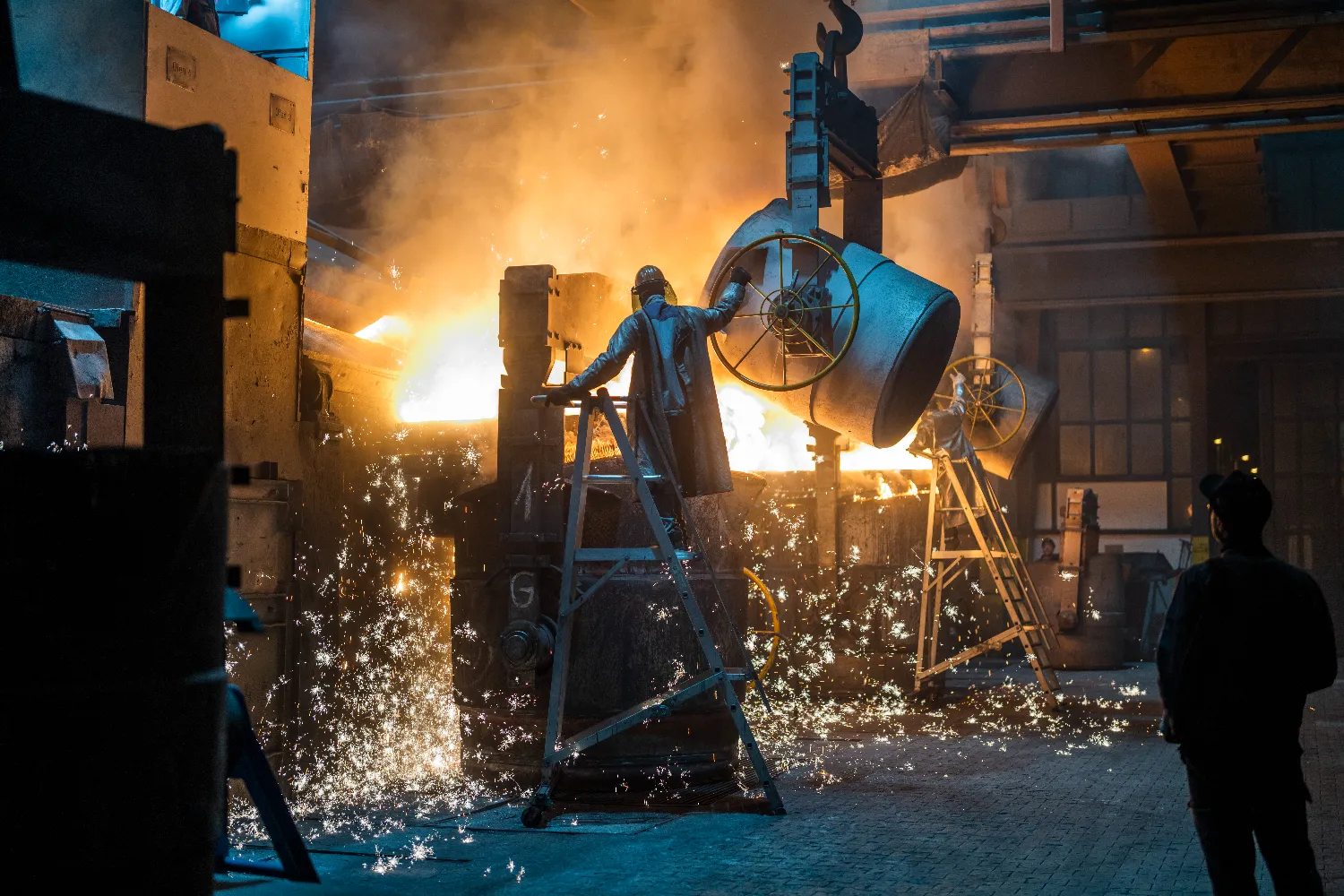
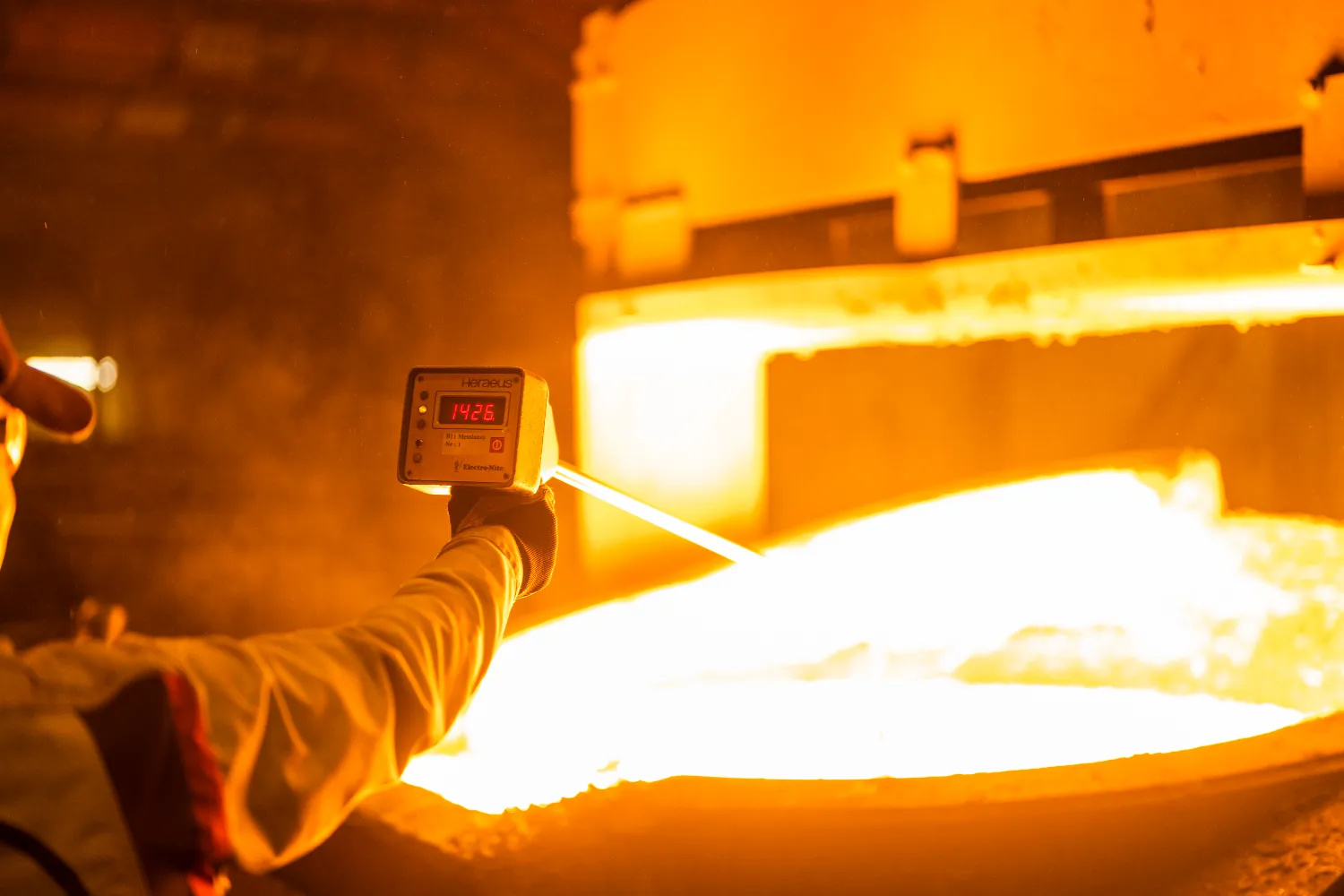
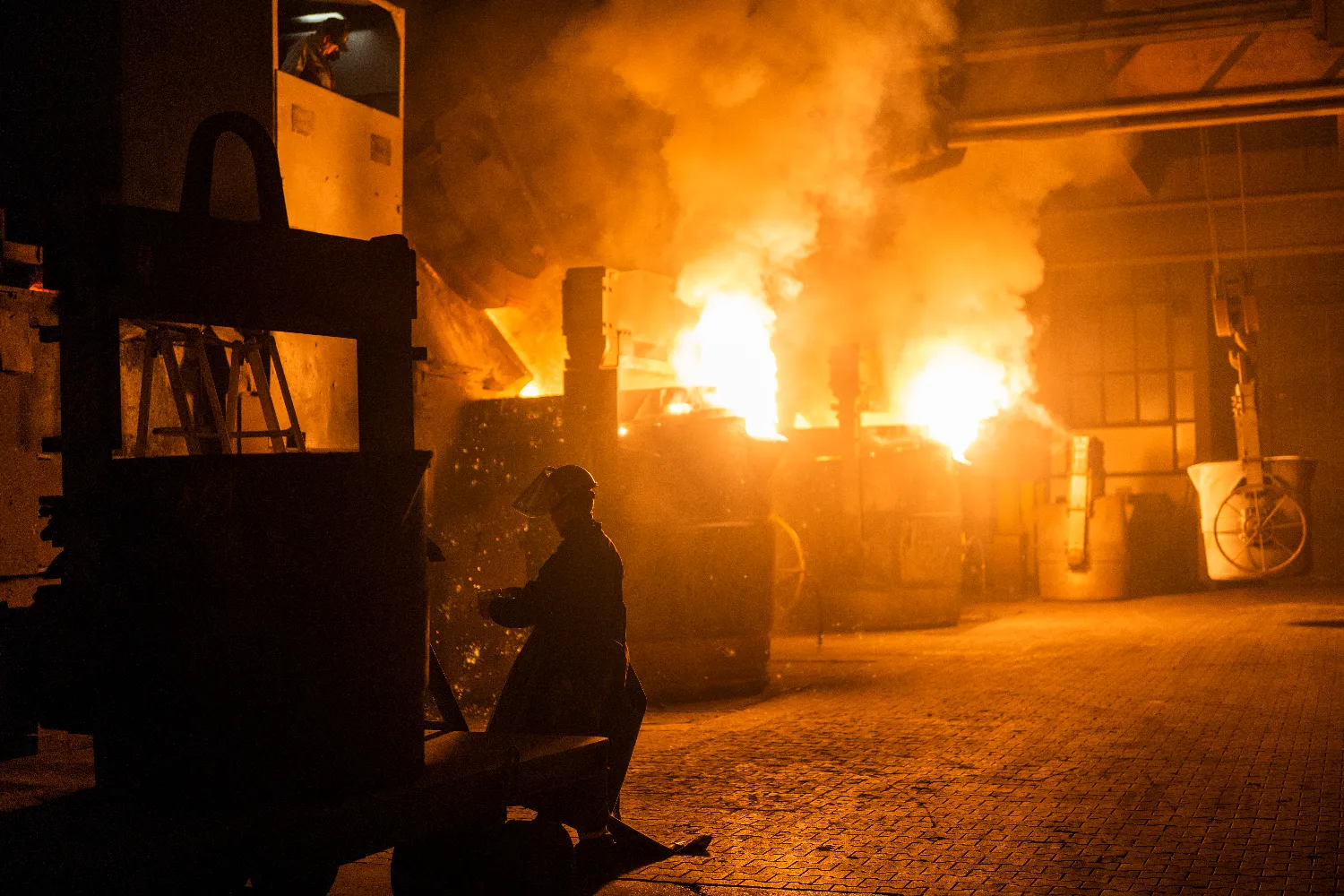
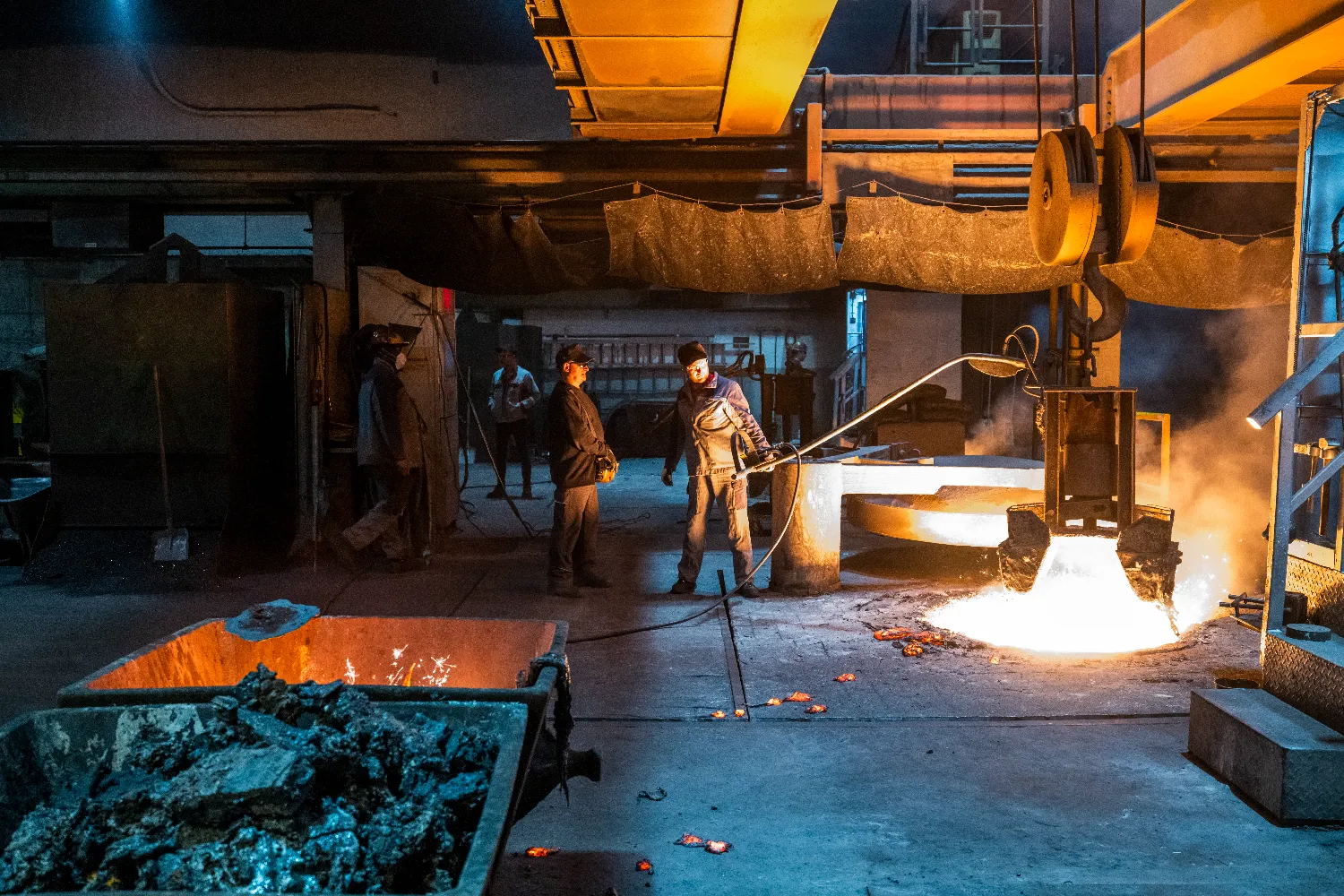
Head of Production here at the Everllence foundry in Augsburg, Germany, Eymann is sharp and alert even though it’s only five in the morning — the usual time for casting such large components since the immense amount of cast iron required, 76 tons alone for the crankcase, takes an entire night to melt. Right now, Eymann and his team have reached one of the most delicate steps in the process: Four individual pots of melted iron will be cast simultaneously into a prepared mold, but first the iron has to cool to 1330°C. The pots have to reach this temperature more or less at the same time; a difference of more than five degrees can ruin a high-quality cast.
The foundry, in operation since 1844, is one of the oldest workshops at the Everllence plant in Augsburg, making 15,000 castings of small to large-sized parts a year. And with four induction furnaces for melting and large patternmaking, molding and casting shops – a complete in-house foundry process – it’s one of the few facilities in Europe that can mass-produce huge crankcases up to 100 tons.
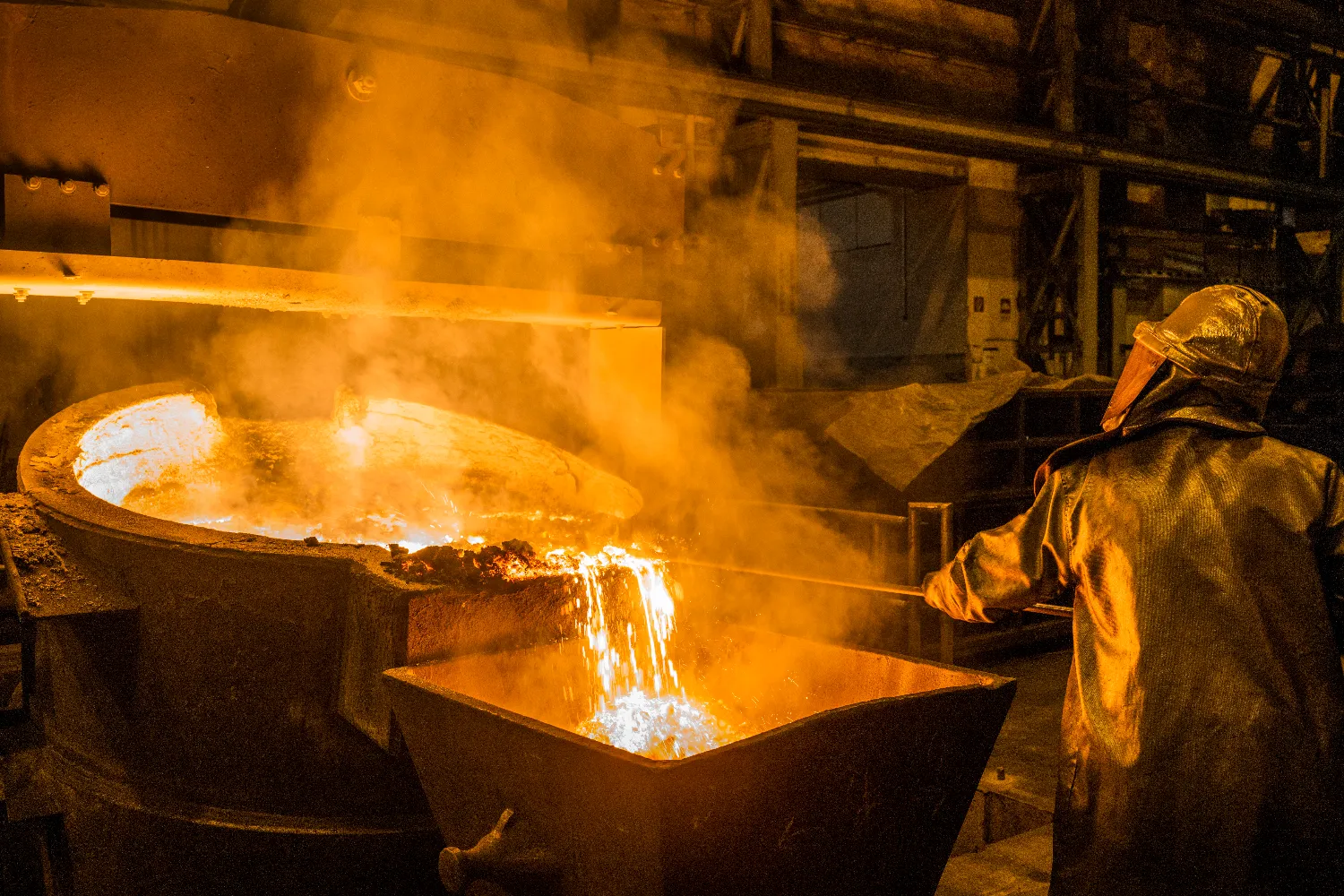
Leading in Europe
For a long time the facility was focused on creating components for Everllence’s own high-end engine products, but recently its doors have opened up: Since 2020, the foundry actively offers its services to external customers. “We’ve produced components for other manufacturers before,” says Marco Nagler, Head of Foundry Business, “but this had always been a small part of our production volume. Now that we’ve established ourselves as one of the very few economically successful foundries for crankcases and other huge castings in Europe, we’re expanding our services and expect third-party orders to make up some 30 to 40 percent of our business.”
In fact, the last two decades of the foundry market were a turbulent affair: A boom before 2008 (due to the economic upswing at the time) was followed by a general decline in mechanical engineering — many foundries failed and disappeared. Recent years have seen an even steeper drop in viable facilities, which makes the Everllence foundry all the more unique.
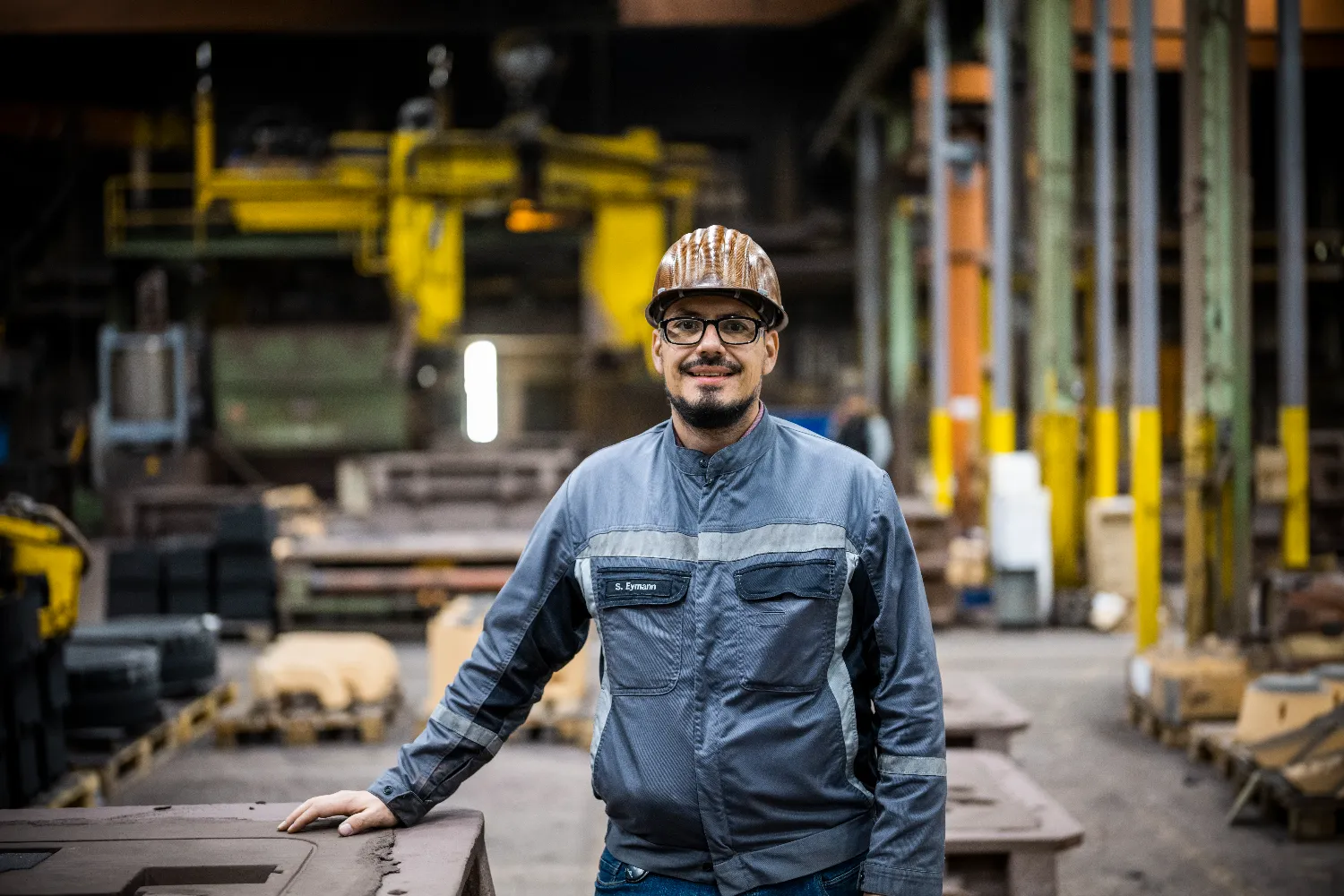
Full-service provider
Sitting in one of the foundry’s offices, Nagler inspects a 3D-printed, 1:20 scale model of a table for an industrial press, one of the most recent components his team has been working on. It looks quite different from the foundry’s usual engine parts, more rectangular and compact, and it has different requirements, for instance in mechanical stability or the final varnishing. “We have to adapt our specifications and workflow accordingly,” says Nagler.
The production planning of components like this one can be time consuming and requires close collaboration with customers. The part itself and its production are carefully simulated digitally before anything happens in the melting shop. Nagler and his staff have recently started to set up new production designs and processes for a variety of mechanical components, like underwater gearing mechanisms or turbines for tidal energy or wind energy harvesting, as well as complex castings for other industries like compressor technology.

“We’re especially good in casting components that require a deep understanding and know-how,” says Nagler. “And we offer full-service solutions, not only single cast iron components, ensuring an efficient and stable long-term workflow. Such long-term security is crucial for customers.” The foundry is part of the Everllence and has also established a sales and distribution department and a customer service center, including a team of technical consultants to work with customers and their engineers.

“Now that we’ve established ourselves as one of the very few economically successful foundries for crankcases and other huge castings in Europe, we’re expanding our services.”
Marco Nagler, Head of Foundry Business, Everllence
The crucial moment
Back in the molding shop, the casting master measures the temperatures of the cast iron in the four pots. “One pot is cooling more quickly than the others,” observes Eymann. The melted iron’s surface is covered with rice husk ash to limit heat loss and slow the cooling. After another 20 minutes the temperatures in the four pots are prime for casting.

The cast master gives the signal and the founders proceed in a coordinated sequence. Cranes swiftly move the pots over the prepared crankcase mold from four sides, then the foundrymen tip them and pour the cast iron into the mold. The pouring takes seconds. Much more time was needed for all the preparations.
It took the founders a week to build this once used mold with chemically hardened sand along with the mold’s core, which determines the shape of the component’s cavities. The molds and cores, in turn, are based on patterns of the components, which are 1:1 duplicates or negatives made of wood that give shape to the sand. For today’s crankcase, one core alone weighs six tons.

“Even very large parts are designed to require less and less material, and we produce them with an accuracy of 0.5 millimeters. Not long ago, founders would have considered this impossible.”
Stephan Briehl, Foundry Sales Manager, Everllence
Tradition meets the modern
Historically, casting is one of the most ancient industries, and to the untrained eye some processes might still appear the same as they were centuries ago. However, the craft has changed dramatically: “The quality demands on the material are incomparably higher today,” says the foundry’s Sales Manager Stephan Briehl. “Even very large parts are designed to require less and less material, and we produce them with an accuracy of 0.5 millimeters. Not long ago, founders would have considered this impossible.”
The foundry also emphasizes environmental sustainability: All electricity for the induction melting furnaces comes entirely from green sources, and up to 80 percent scrap iron and steel are used in the melting. The foundry also reuses 97 percent of the sand from its sand molded casting to create new molds.
In addition, the foundry increasingly uses automation technologies. Recent developments include the use of robots for fettling — primarily for smaller parts now, but within a few years even the largest components will be fettled by robots. Moreover, the foundry’s production of midsized components from 300 kilograms up to 40 tons relies on a semi-automated mold production. The foundry’s entire portfolio of cast iron parts includes a range from 300-kilogram light bearing brackets to 100-ton crankcases.
In the molding shop, the casting of the crankcase is done. Now it’s time to wait. In 17 days the new component will have cooled down to 300°C and be ready to be removed from the mold. Afterwards it will be milled, fettled and varnished. And soon, it will help to power a ship on its travels over the oceans.
About the author
Santina Russo is a freelance science journalist in Zurich, Switzerland.
